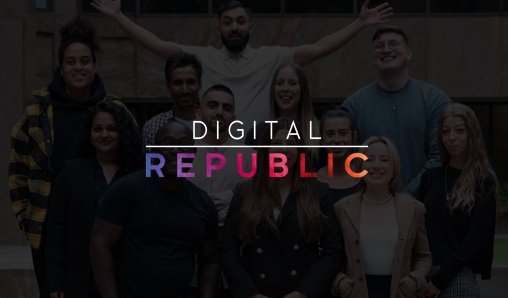
Programmatic Lessons For The OOH Industry

Originally posted by MediaCom programmatic director Ben Whall
Digital out of home (DOOH) has long been identified as the next channel set to go through a programmatically powered evolution.
Earlier this year the Outdoor Media Association (OMA) announced that, for the first time, DOOH revenue now accounts for the majority of the total OOH market. With this continuing to scale, the viability of programmatic solutions increases.
This scalability, coupled with maturation of the data and technology available to the market, provides buyers with the opportunity to begin to deliver on this potential.
However, the industry is still in its infancy, with agreed ways of working programmatically yet to be established between buyers and sellers.
There are few people that would argue that establishing a programmatically powered display market has been seamless – with many still questioning whether the introduction of technology has delivered on the promises made to both brands and publishers.
I believe that there are five critical lessons that can be learnt from the evolution of the programmatic display landscape, to create a sustainable programmatic OOH ecosystem that can benefit the entire industry.
1. Only buy programmatically where incremental value can be demonstrated
This first lesson is arguably the most important. Buyers need to assess platforms and ways of transacting based on the demonstrable added value delivered for their brands.
The introduction of programmatic technology will incur additional costs for advertisers– these costs must be offset by a tangible efficiency gain due to more advanced buying functionality. Simply using programmatic technology to facilitate ‘programmatic direct’ bookings will not offset this technology cost sufficiently.
Above all, there needs to be a benefit for the buyer and the seller.
2. Be honest about capabilities, methodology, and communicate often
In some ways from a digital perspective, it has been almost impossible to deliver on the hype that had built around programmatic activation given some of the claims around the platform’s capabilities.
We need to be very clear with brands about, not only the possibilities that the addition of technology and data will enable – which are extremely exciting, but also any limitations that may exist.
If buyers need to embellish the truth about capabilities to get buy-in from brands, then the product isn’t yet good enough. The industry will never be able to move forward if any deficiencies are simply papered over.
Given the nature of the medium, specifically around the impression multiplier mechanism, there will be elements of statistical modelling that will take place. We need to ensure that brands understand the source of any data and the methodology that has been applied to that data through all stages of the process.

3. Transparency is table stakes
A search of the terms ‘Programmatic’ & ‘Transparency’ yields 6 million results. Suffice to say that whilst huge improvements have been made in this space, it has taken the industry far too long to provide a level of clarity that most brands are truly comfortable with.
We want to learn from our past lessons, and the OOH industry has made some huge investments to ensure its transparency over the last years. We need to head theses lessons and cannot allow transparency to become a barrier in the OOH programmatic space. Given some of the probabilistic methodologies that will be utilised in the buying process, there will undoubtedly exist an initial seed of doubt in the minds of some brand managers regarding the efficacy of this.
The only way to allay those fears is for buyers to be completely transparent about the investment decisions that are being made on behalf of brands, whilst working collectively with the OOH industry.
4. Create an open and competitive environment
It will be important to ensure that both buyers and sellers are able to freely evaluate the technology platforms that they wish to partner with.
The number of DSPs that buyers work with has reduced from an average of 6 to 4 between 2016 and 2018, despite an increasingly diverse inventory pool becoming available to buy programmatically.
One of the driving factors behind this shift is that having to transact via multiple buying platforms dilutes potential efficiency gains in terms of both resource and more importantly, optimisation fluidity.
Therefore, it is important that media owners try to ensure that their inventory is open to demand from any platform that buyers may choose to work with, and not force buyers into needing to work with additional buying platforms to maximise scalability.
Similarly, it is the responsibility of buyers to ensure that the platforms they select, do not impose any restrictions on the solutions that media owners are able to work with or wish to develop themselves.
If siloes such as these were created, those platforms that can offer unique access to supply/demand are less incentivised to negotiate on pricing and invest in developing their product functionality, knowing that they are the gatekeepers of unique inventory/budgets that their competitors cannot offer.
We must work to ensure that there are as few barriers in the OOH market as possible to guarantee intermediary technologies remain competitive in both pricing and functionality.
5. Ensure media owners see the benefit
Depending on market, access to a majority of available display inventory may require buying via 80-100 publishers. This has led to a degree of commoditisation across the market and perpetuated a ‘race to the bottom’ on pricing. As a result, there are some digital publishers that associate programmatic buying with an erosion of their yield.
The supply dynamic of the OOH inventory is significantly different to the display landscape. Fewer media owners are required to access a majority of OOH inventory – meaning the supply & demand dynamics are unlikely to result in a reduction to the floor prices that media owners set.
Therefore, buyers need to ensure the efficiency gains of trading programmatically come from improved targeting capability as a result of applying data and technology – and not activate under the assumption inventory will be able to be bought at lower CPMs.
There is an incredible opportunity to establish a way of transacting whereby media owners can benefit as much as buyers and the brands they represent – and that is what the industry needs to aim towards.
Provided all parties heed these lessons, I strongly believe the long-promised potential of a truly Programmatic OOH ecosystem can be delivered.
If you found this blog interesting, you might enjoy reading this post too.



